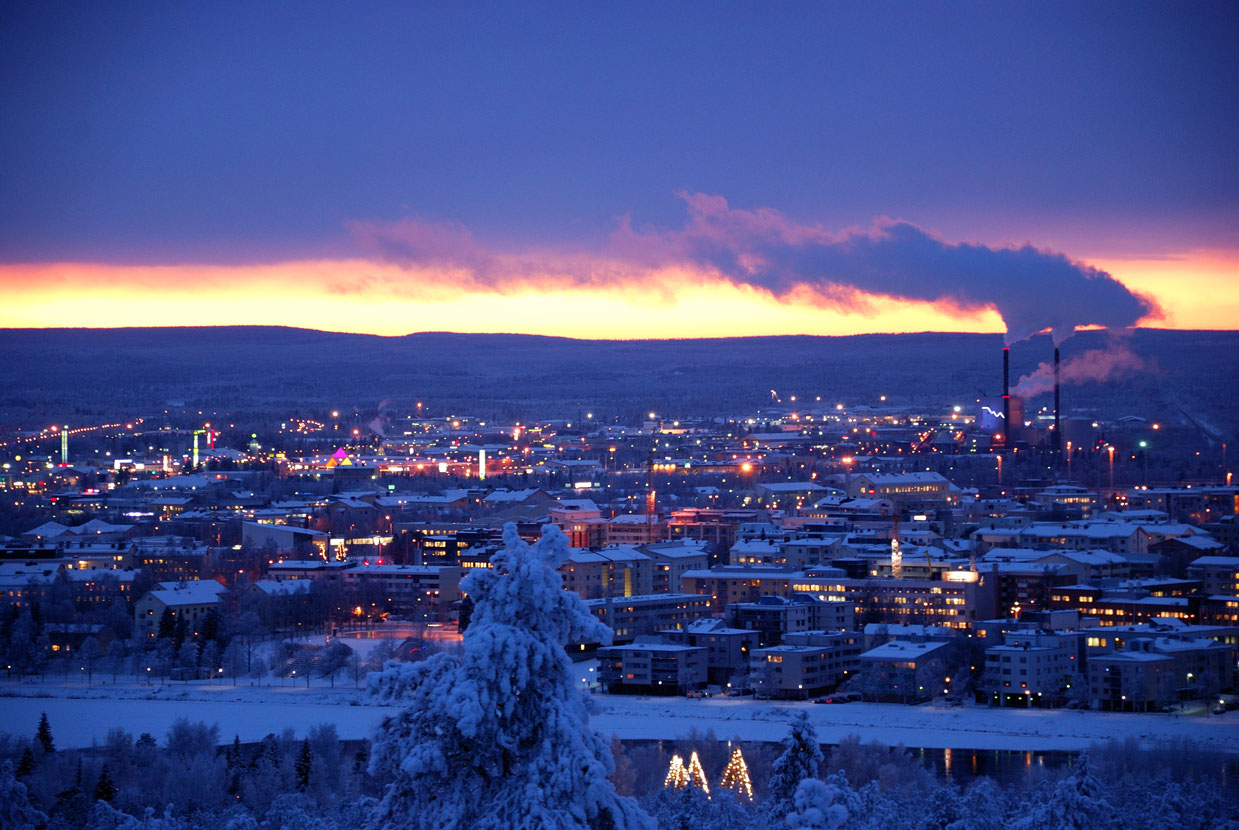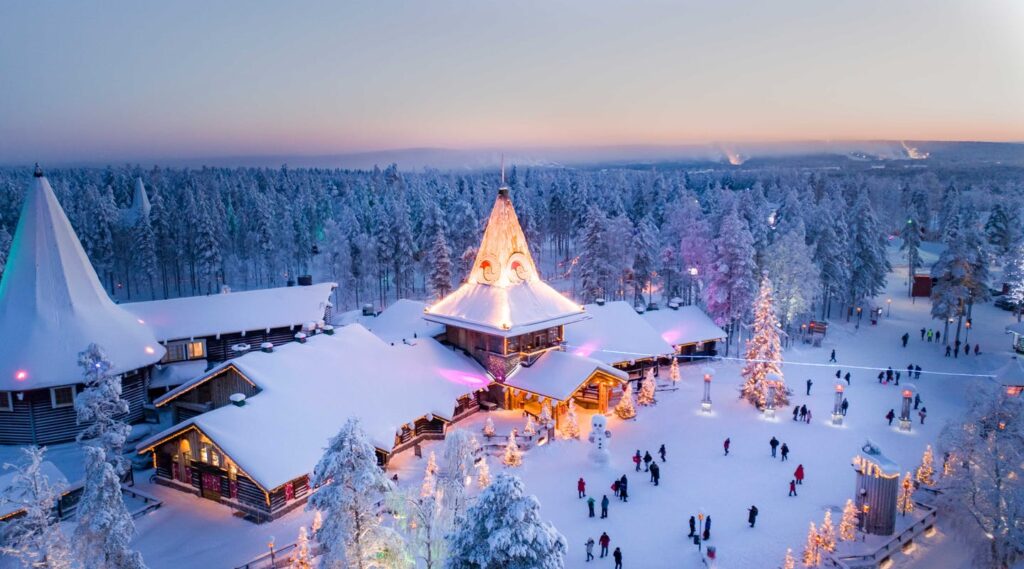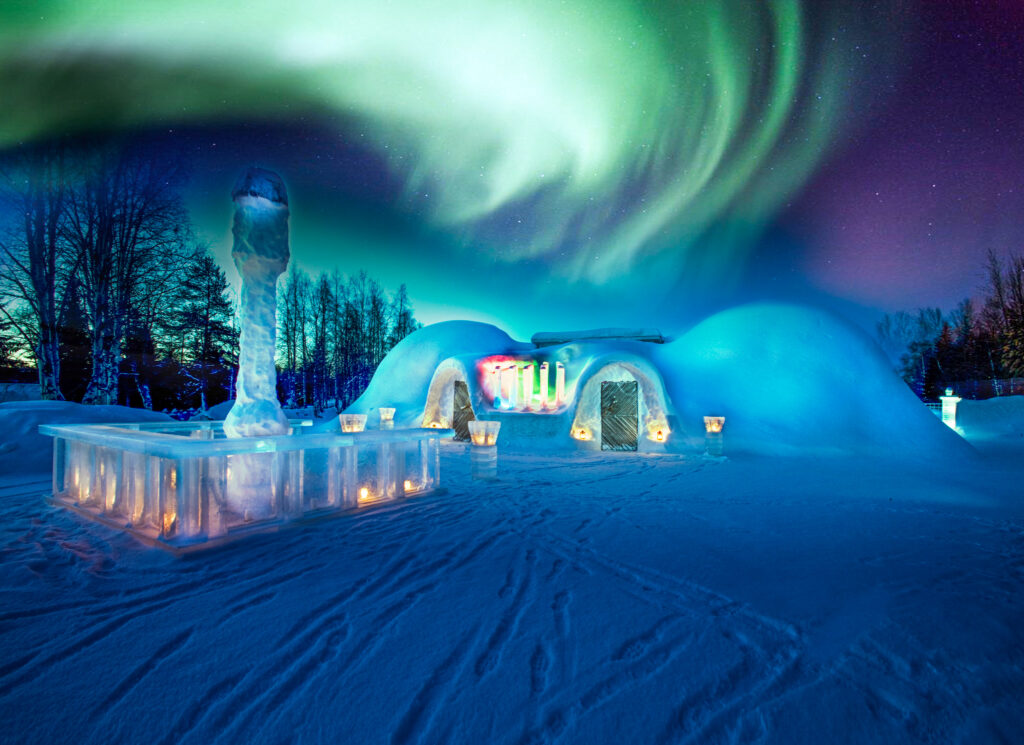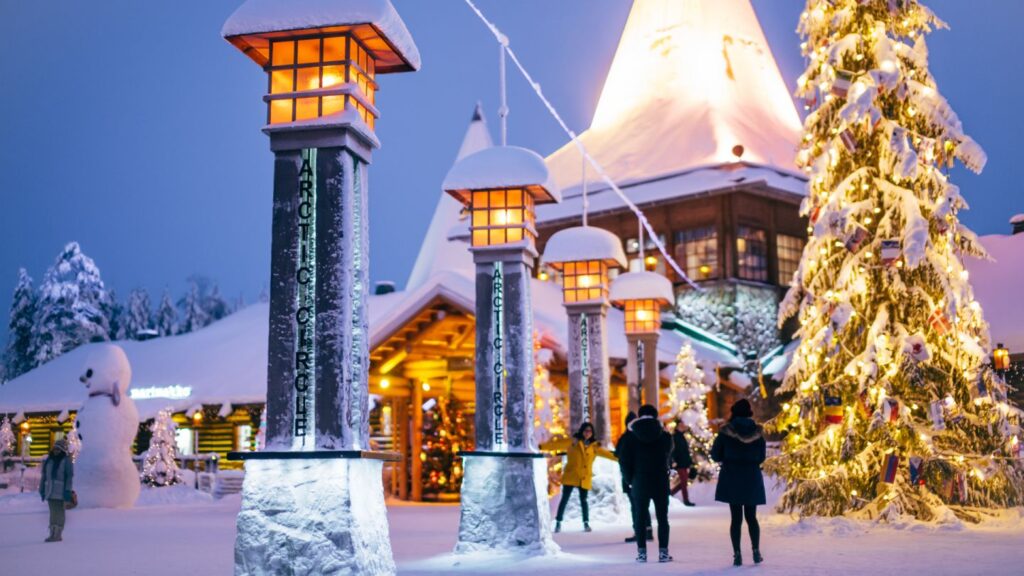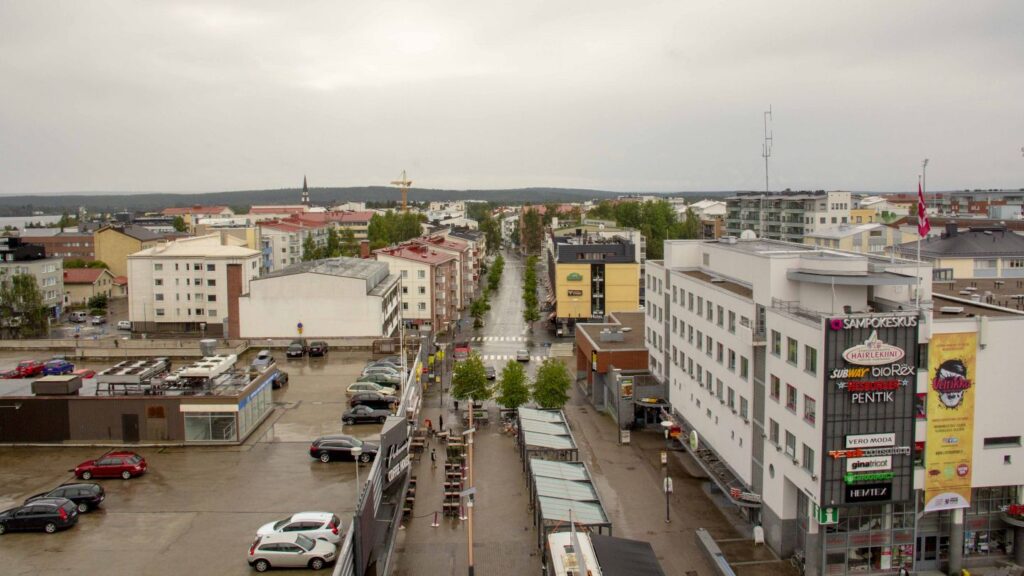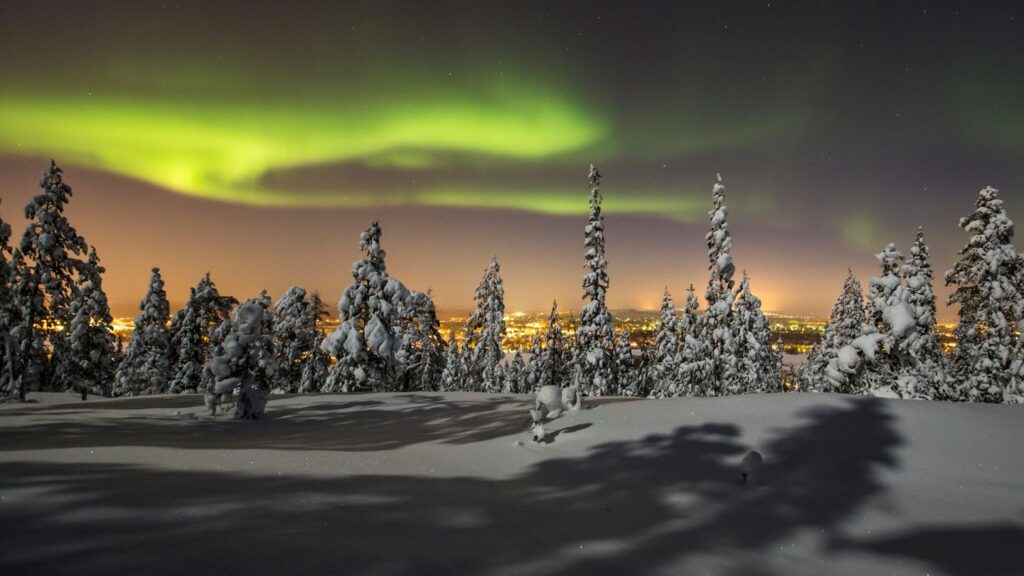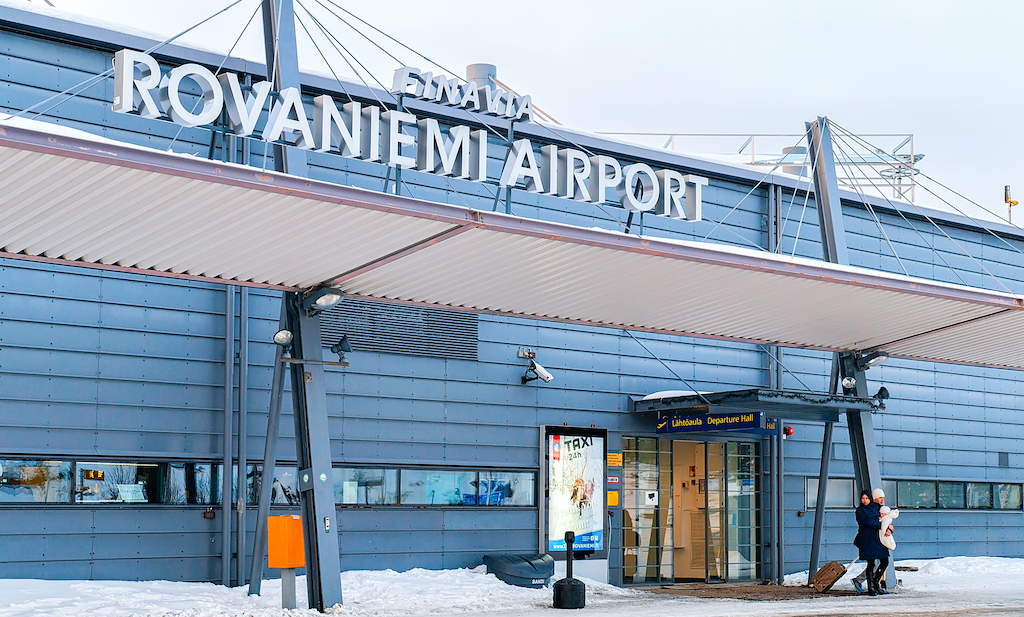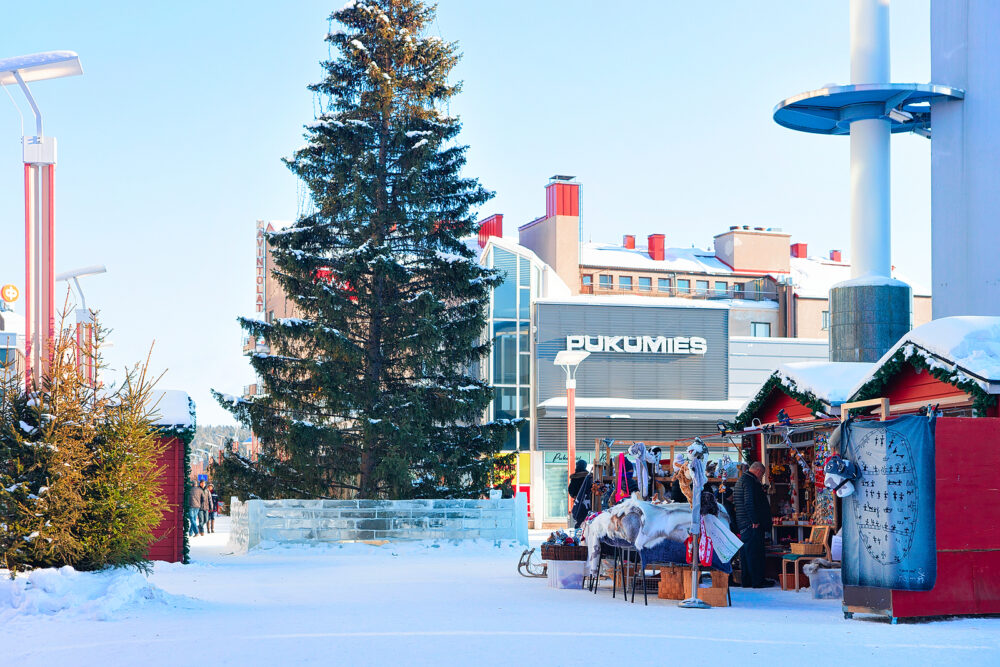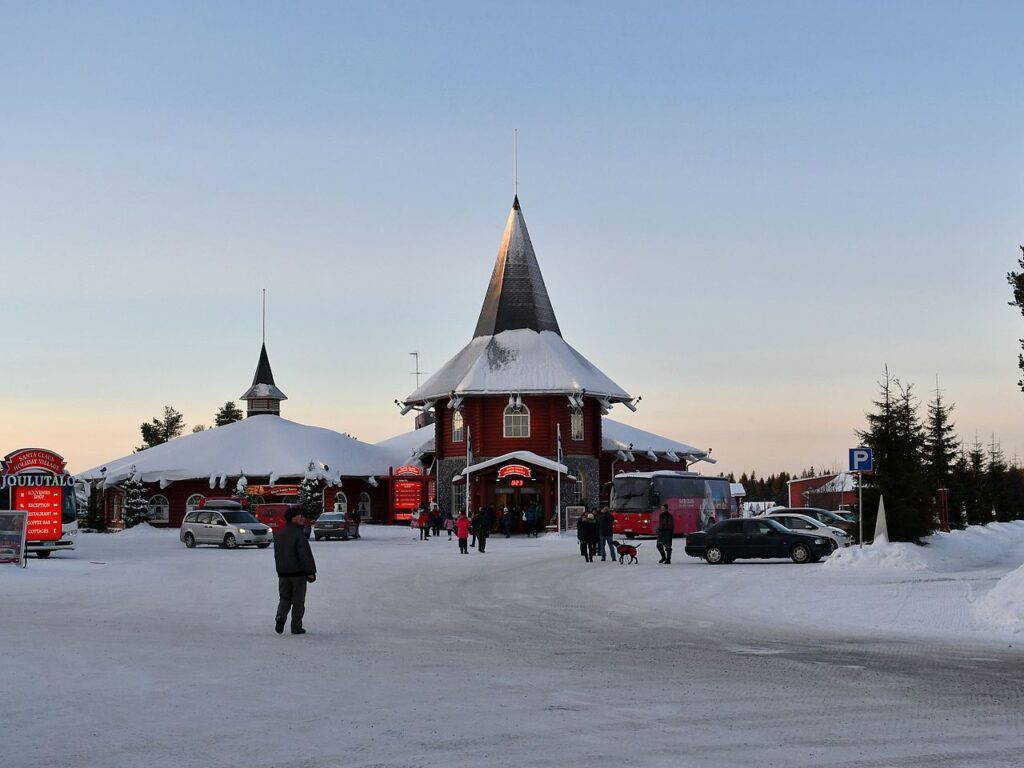Rovaniemi is a city and municipality of Finland. It is the administrative capital and commercial centre of Finland’s northernmost province, Lapland, and its southern part Peräpohjola. It is situated about 6 kilometres (4 miles) south of the Arctic Circle and is between the hills of Ounasvaara and Korkalovaara, at the confluence of the river Kemijoki and its tributary, the Ounasjoki.
The city and the surrounding Rovaniemen maalaiskunta (Rural municipality of Rovaniemi) were consolidated into a single entity on 1 January 2006.
Rovaniemi municipality has an approximate population of 64,000. The urban area of Rovaniemi has a population of 53 361, in an area of 5,977 km2. Rovaniemi is a unilingual Finnish-speaking municipality and, uncommonly for larger Finnish towns, it is also known by its Finnish name and spelling in the Swedish language.
Modern day
Since Rovaniemi is the capital of the region of Lapland, many government institutions have their offices there. About 10,000 of the inhabitants are students. Rovaniemi is home to not only the University of Lapland but also the Lapland University of Applied Sciences (formerly known as the Rovaniemi Polytechnic), which comprises institutes of information and traditional technology, business, health and social care, culinary studies, forestry, rural studies, and sports. Local newspapers include the Lapin Kansa, Uusi Rovaniemi and Lappilainen.
Rovaniemi’s most prominent landmarks include the Jätkänkynttilä bridge with its eternal flame over the Kemijoki river, the Arktikum Science Museum which rises out of the bank of the Ounasjoki river, the Rovaniemi city hall, the Lappia Hall, which serves as a theatre, concert hall, and congress centre, and the library.
The last three mentioned buildings are designed by the famous Finnish architect Alvar Aalto. The Arktikum Science Museum is a comprehensive museum of Finland’s, and the world’s, Arctic regions.
Tourism
Because of the unspoiled nature of the area and numerous recreational opportunities, tourism is an important industry in Rovaniemi. The city has a number of hotels and restaurants located both in the centre and on the outskirts of the town, hosting over 481,000 visitors in 2013.
Rovaniemi is also considered by Finns to be the official home town of Santa Claus. It is home to the Santa Claus Village at the Arctic Circle and SantaPark Arctic World, which is located 8 km (5 mi) north of the centre.
Directly across the river from the town is the Ounasvaara ski centre. The top of the Ounasvaara hill bears the site of some of the earliest known human settlements in the area.
A phenomenon also attracting numerous tourists is the Aurora Borealis or Northern Lights. In Finnish Lapland, the number of auroral displays can be as high as 200 a year whereas in southern Finland the number is usually fewer than 20.
Sports
The city is home to the football clubs Rovaniemen Palloseura, or RoPS, part of the Veikkausliiga, the Finnish premier division, and FC Santa Claus, part of the third division; to the ice hockey team Rovaniemen Kiekko, or RoKi, whose home arena is Lappi Areena and which currently competes on Mestis, the second-highest league in Finland; and to the volleyball team called Team Lakkapää (formerly Rovaniemen Santasport and Perungan Pojat), which plays in the Finland Volleyball League and won the national championship in 2003, 2007, 2008 and 2011.
Rovaniemi has hosted several international ski competition, including the FIS Nordic World Ski Championships 1984, several FIS Nordic Combined World Cup and FIS Ski Jumping Continental Cup events, the 2005 FIS Nordic Junior World Ski Championships, the 1970 Winter Universiade and the 2008 Winter Transplant Games.
History
Periodic clearance of new land for agriculture and the practise of slash-and-burn cultivation began around 750–530 BC. Artifacts found in the area suggest that an increasing number of travellers from Karelia in the east, Häme in the south and the Arctic Ocean coast in the north must have come there from 500 AD onwards. The Sami are considered to be Lapland‘s most indigenous existing population.
It is first mentioned by name in official documents in 1453, existing effectively as a set of small villages whose inhabitants earned their living mainly in agriculture and animal husbandry—with fishing and hunting the most important offshoots.
The exploitation of Lapland’s natural resources in the 1800s boosted Rovaniemi’s growth. Extensive logging sites and gold fever attracted thousands of people to Lapland. As the mining of natural resources was increased, Rovaniemi became the business centre of the province of Lapland.
